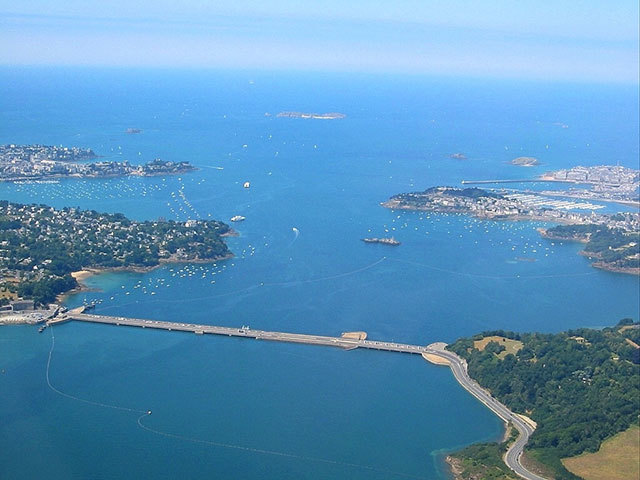
Man-made lagoons which harness the power of tides could generate 10% of the UK’s electricity, developers of the first such scheme have said.
Plans have been drawn up to create a £650million tidal lagoon in Swansea Bay in the Severn Estuary, which could produce enough renewable electricity to power 120,000 homes by 2018.
The lagoon, formed by constructing a six-mile wall around the bay, will create differences in water levels as the tide rises and falls. These will be used to drive a series of large turbines for 14 to 16 hours a day.
The developers believe the lagoon, created from local materials, is the most environmentally friendly option for the Severn, which has been subject to a long-running debate about whether to build a multibillion-pound 10-mile barrage across the estuary to harness its massive tidal range for electricity.
“It’s not possible to build a piece of infrastructure at this scale without having an impact on the environment; we believe that the impacts are minor, manageable and mitigatable,” said Alex Herbert, head of planning at Tidal Lagoon Power.
“The environmental impact has been central to everything we’ve done.”
The scheme, which will be submitted for planning approval at the end of the year, includes plans for cycling and walking routes along the sea wall, a visitor centre, sailing and other recreational facilities and aquaculture including the reintroduction of oysters.
“Swansea we see as the first in a whole number of similar lagoons, with two or three in the Severn estuary, another in North Wales and near Liverpool,” said Ton Fijen, technical director of Tidal Lagoon Power.
Putting projects around the coast where tides occur at different times would deliver power around the clock.
A series of lagoons, which would last more than 100 years, could provide 10% of the UK’s baseload electricity requirement, he said. Construction would generate 3,000 jobs, with up to 40 long-term operation jobs and as many in recreation roles.
Iain Roberts, marine engineer with Atkins Global which is involved in the project, said the design could be exported, with countries such as China, Russia and South Africa having potential for tidal power.
The project, which would save an estimate 210,000 tonnes of carbon dioxide a year, could receive low-carbon subsidies at levels negotiated with the Government.
Herbert said the company was confident it would get an agreement in principle in time to meet the requirements for the project.
He said the scheme had received largely positive responses from local people, who identified clean energy, jobs and cheaper electricity bills as its major benefits.
The company is looking at offering cheaper electricity to nearby households as well as community ownership models.
The proposals have also received a cautious welcome from environmental groups, which opposed plans for a tidal barrage on the grounds it would be very damaging to habitats and wildlife.
“Unless we receive information to the contrary, we think it will be a really useful addition to the renewables portfolio in Wales,” said Gareth Clubb, director of Friends of the Earth Cymru.
“We hope the environmental impact assessment won’t throw up anything majorly untoward and we think the company is doing good work in making sure the environmental impacts are thoroughly evaluated,” he added.
“Swansea Bay is outside the internationally protected areas of the Severn Estuary, so the developers have avoided potential major conflict,” said Carrie Hume, The Wildfowl and Wetlands Trust’s head of conservation policy.
“They are also actively engaging with stakeholders and looking to reduce impacts on the environment, so this is the sort of approach that WWT wants to see – it allows us to take the small steps necessary to generate sustainable tidal energy without damaging the Severn.”
RSPB spokesman Grahame Madge said the wildlife charity wanted to see the details of the proposal to judge it against the same environmental tests as the barrage, such as whether suitable alternative areas could be found to replace lost habitat and whether it would affect migratory fish.
“There’s a lot to go through,” he said, but added: “This is the sort of scheme that perhaps shows more promise, trying to work more with the dynamics of the Severn and its wildlife.”
Recommended for you
